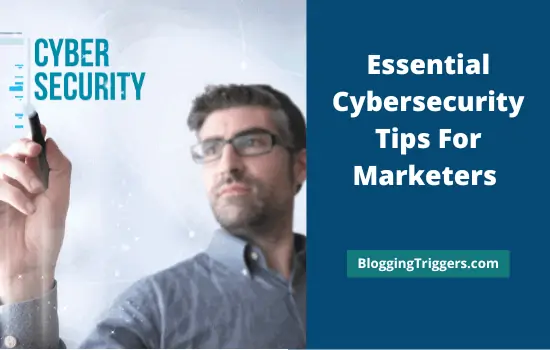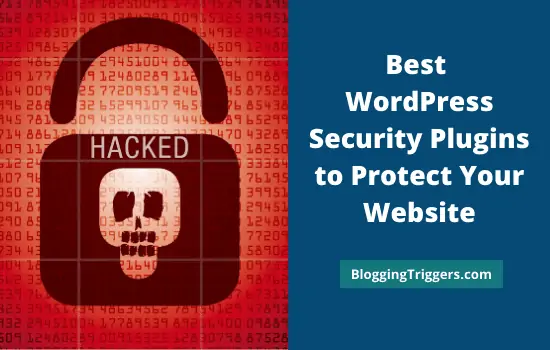
The digital marketing industry must be able to keep up with fast trend changes and cater to its customers’ needs. It’s often challenging to keep an eye on the growing number of security risks that occur naturally over the time of innovation.
To help you focus on your business goals, we decided to list a few of the most common cybersecurity risks you should be aware of and suggest methods to deal with them.
Table of Contents
Cybersecurity risks digital marketers face
Brute force and dictionary attacks
Both brute force and dictionary attacks aim to steal your password information and break into your accounts. In brute force attacks, hackers use a trial-and-error approach to decipher your passwords and PINs. They most commonly use automated software capable of checking massive amounts of combinations in a short time.
Similarly, dictionary attacks are a type of brute force attacks where attackers test extensive lists of words you usually find in dictionaries and which people often use in their passwords.
Phishing
Marketers are one of the most frequent targets of phishing attacks. In fact, IRONSCALE’s study showed that 80% of companies had experienced a phishing attack since the beginning of the pandemic.
In most of these attacks, hackers pose as known customers, business partners, or reputable organizations to lure victims into sharing sensitive company data.
Ransomware
Even the biggest marketing and tech companies like Acer and Kaseya had fallen victims to ransomware attacks. Millions of pieces of data had been encrypted by malicious third parties demanding insanely high ransom fees.
CMS attacks
Since they’re built upon open-source frameworks, content management systems (CMSes) are susceptible to cyberattacks. Furthermore, companies usually don’t apply updates and security patches regularly, which puts them at an even greater risk of getting hacked.
How to protect yourself from cyberattacks
Create strong passwords

Bearing in mind that most of our accounts are protected by passwords, risky password practices are some of the most common causes of data breaches. More than 80% of all data breaches are directly related to unprotected credentials.
Create strong passwords that contain at least fourteen characters and don’t use them across multiple accounts. Furthermore, avoid using personal information like birthdays or names in your credentials because this information is usually easy to find online, and it can significantly decrease your online safety.
Ensure you’re not using dictionary words in your passwords since they can be broken through in seconds. To avoid getting targeted by dictionary attacks, swap vowels for numbers or use emojis as a part of your password.
Keep your credentials safe
Considering that an average user has around eighty accounts that require password protection, it’s improbable that he’ll memorize them all. In those cases, we tend to reach for a few of our favorite passwords we already use across several accounts and endanger our online safety even more. The safest lane you could take is switching to a password manager.
Password managers encrypt and safely store your credentials in a vault. They also have a generating feature, meaning the only password you’ll have to come up with is your master password, and your manager will take care of the rest of them.
You can choose between a password manager that works in the cloud or one that stores data locally. Even though you’ll have better autonomy over locally stored data, cloud-based password managers can help you retrieve your data even if your device gets stolen or lost.
Use multi-factor authentication

We got so used to passwords that we often forget how unreliable means of protection they can be. However, when combined with other protective mechanisms, passwords can work wonderfully.
If you want to bring your account protection to a higher level, start relying on multi-factor authentication. Most MFA tools, alongside knowledge-based features (passwords, PINs), use biometric traits (fingerprints, face scans) and some sort of possession (cards, tokens, keys) to protect your accounts.
Organize cybersecurity awareness training
Regardless of which tools and software you choose to upgrade your cybersecurity and protect your business, it is essential to familiarize yourself with the proper implementation and features your tools offer, mainly if the tools will be used across the entire company and your employees aren’t acquainted with them.
Start with organizing cybersecurity awareness training every six months or whenever you start using new software. Depending on the nature of your business, introduce your employees to potential cybersecurity risks they may face and explain how to approach each issue. Don’t hesitate to invite a third-party expert if you think your IT team could use some help.
Conclusion
Since digital marketers tend to be lucrative targets, cybercriminals are trying every trick in the book to get to their data. If you want to protect your business, start with assessing the level of risk you’re exposed to and prioritize protecting the most sensitive departments first.
Build your cybersecurity strategy from there, ensure your employees are well acquainted with the tools they use, and teach them how to detect threats to prevent further damage.
Read 10 Best WordPress Security Tips to Protect Your Website in 2024



